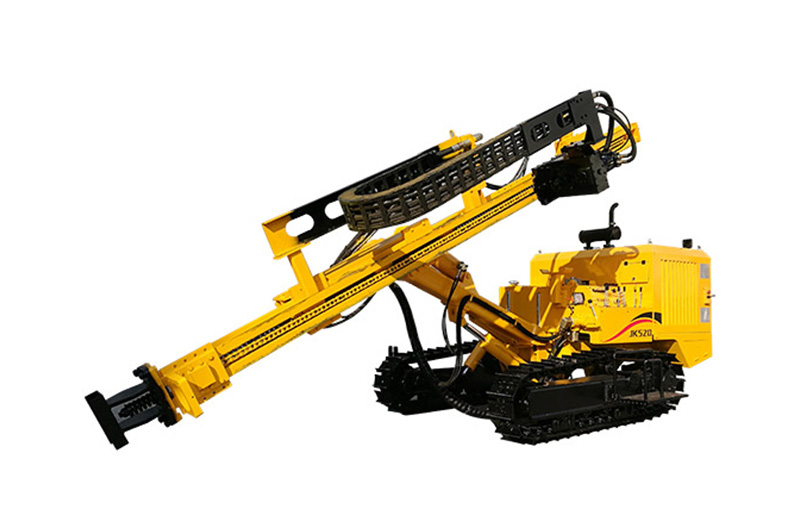Jun. 16, 2023
Machinery
In the world of drilling, two commonly used methods stand out: rotary drilling and DTH (Down-The-Hole) drilling. Both techniques serve specific purposes and come with their unique advantages and disadvantages. Understanding the difference between rotary and DTH drilling is crucial for professionals in the drilling industry. In this comprehensive guide, we delve into the details of both methods, highlighting their features, applications, and benefits. So, let's dive in and explore the world of drilling!
Rotary drilling is a widely employed drilling technique that utilizes a rotating drill bit to penetrate various subsurface formations. It involves the continuous rotation of the drill string, which includes the drill bit, drill pipe, and other necessary tools. Here are some key aspects of rotary drilling:
Rotary drilling excels in drilling through different types of formations, including soft soils, sedimentary rocks, and even hard formations like granite and basalt. This versatility makes it suitable for a wide range of applications, from oil and gas exploration to water well drilling.
A typical rotary drilling rig comprises several components, such as the rotary table, mast, kelly, and swivel. The rotary table provides the rotational power, while the mast supports and controls the drill string's vertical movement. The kelly connects the rotary table to the drill string, and the swivel enables the transfer of mud and other fluids down the hole.
One of the key advantages of rotary drilling is the implementation of a mud circulation system. Drilling mud, a specially formulated fluid, is pumped down the drill string and returns to the surface through the annular space between the drill string and the borehole wall. This system serves multiple purposes, including cooling the drill bit, carrying cuttings to the surface, and maintaining borehole stability.
Rotary drilling finds extensive application in various industries. It is commonly used for oil and gas exploration, geothermal drilling, mining operations, and environmental investigations. Its adaptability and efficiency make it a preferred choice for both shallow and deep drilling projects.

DTH drilling, on the other hand, offers a different approach to drilling. It involves using a pneumatic or hydraulic hammer to drive a rotating drill bit into the rock formation. Here's a closer look at the key aspects of DTH drilling:
Unlike rotary drilling, which relies on the rotational motion, DTH drilling harnesses the power of percussion. The hammer strikes the back of the drill bit, transmitting high-frequency impacts that break the rock. The rotation of the drill bit aids in clearing the cuttings and maintaining hole stability.
The Down-The-Hole hammer is a critical component of DTH drilling. It is connected to the drill string and delivers powerful blows to the drill bit. DTH hammers are available in various sizes and designs, allowing for customization based on the drilling requirements.
DTH drilling is known for its speed and efficiency in penetrating hard rock formations. It offers rapid drilling progress, making it an ideal choice for demanding projects that involve hard or abrasive materials. Additionally, DTH drilling minimizes deviation, allowing for precise borehole alignment.
DTH drilling finds applications in diverse fields, such as mining, construction, quarrying, and water well drilling. It is particularly favored for drilling in hard rock formations, where other methods might encounter challenges.
Selecting between rotary drilling and DTH drilling depends on various factors. Here are some considerations to help you make an informed decision:
The nature of the formation plays a crucial role in determining the suitable drilling method. Soft formations are generally better suited for rotary drilling, while hard formations often require the efficiency of DTH drilling.
Consider the specific requirements of your drilling project. Factors like depth, diameter, drilling speed, and accuracy will influence the choice between rotary and DTH drilling.
Evaluate the cost-effectiveness and efficiency of each method. Rotary drilling may be more cost-effective for certain applications, while DTH drilling can offer higher productivity in hard rock conditions.
Assess the environmental impact associated with each drilling method. Rotary drilling's mud circulation system requires proper management of drilling fluids, while DTH drilling generates fewer waste materials.
In conclusion, both rotary drilling and DTH Drilling Rig have their strengths and applications. Rotary drilling offers versatility and adaptability for a wide range of formations, while DTH drilling excels in hard rock conditions, delivering precision and power. The choice between the two methods depends on various factors, including formation characteristics, project requirements, cost, and environmental considerations. By understanding the key differences between rotary and DTH drilling, professionals in the drilling industry can make informed decisions and optimize their drilling operations.
Previous: Understanding the Basics of CNC Lathe Machines: Operation and Applications
Next: Exploring the Difference between Rotary and DTH Drilling
If you are interested in sending in a Guest Blogger Submission,welcome to write for us!
All Comments ( 0 )